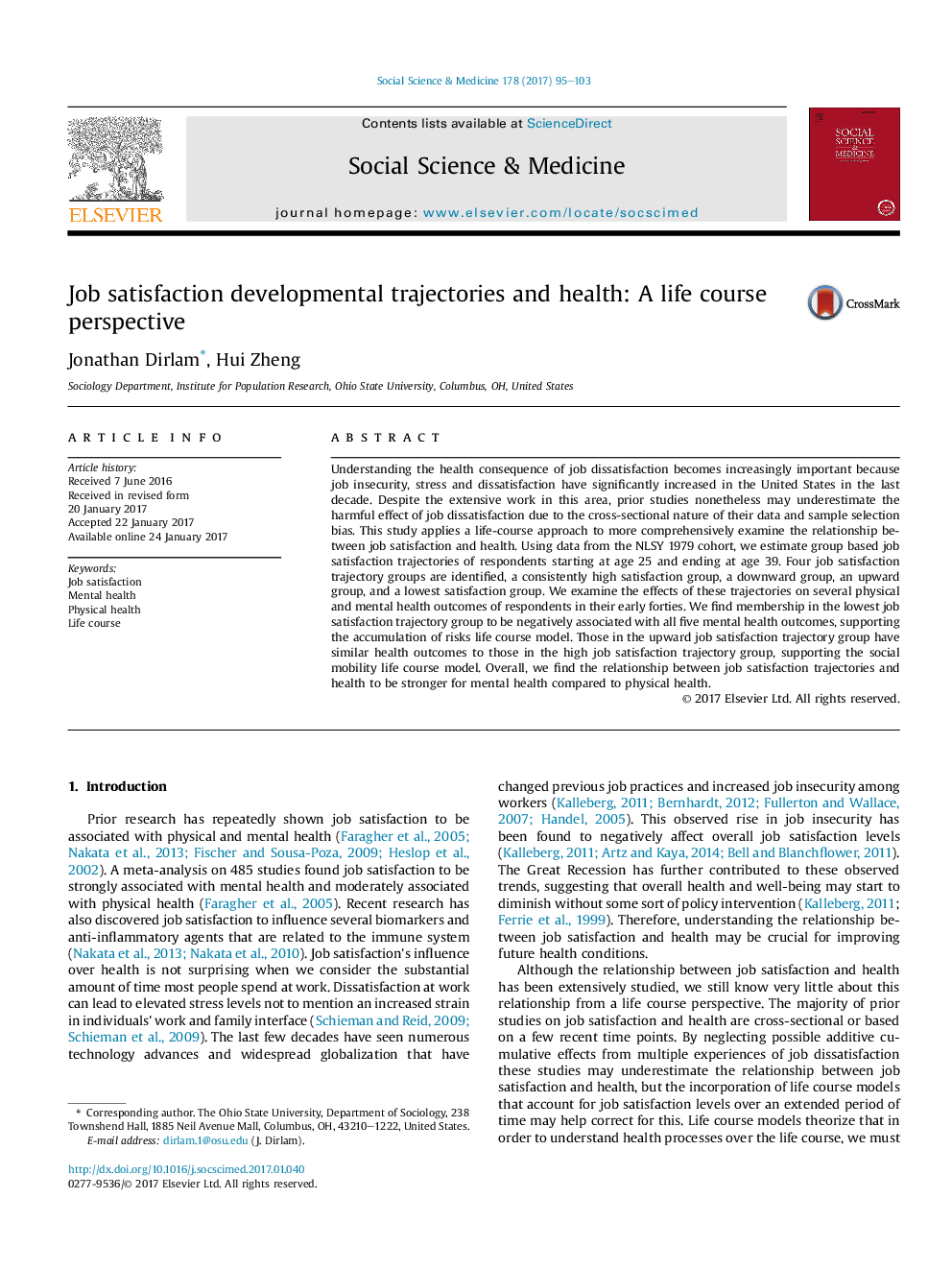| Article ID | Journal | Published Year | Pages | File Type |
|---|---|---|---|---|
| 5046657 | Social Science & Medicine | 2017 | 9 Pages |
â¢Job satisfaction between ages 25-39 has a cumulative effect on health at age 40s.â¢Those in the lowest job satisfaction group had the worst health.â¢Job satisfaction's effect is stronger for mental compared to physical health.
Understanding the health consequence of job dissatisfaction becomes increasingly important because job insecurity, stress and dissatisfaction have significantly increased in the United States in the last decade. Despite the extensive work in this area, prior studies nonetheless may underestimate the harmful effect of job dissatisfaction due to the cross-sectional nature of their data and sample selection bias. This study applies a life-course approach to more comprehensively examine the relationship between job satisfaction and health. Using data from the NLSY 1979 cohort, we estimate group based job satisfaction trajectories of respondents starting at age 25 and ending at age 39. Four job satisfaction trajectory groups are identified, a consistently high satisfaction group, a downward group, an upward group, and a lowest satisfaction group. We examine the effects of these trajectories on several physical and mental health outcomes of respondents in their early forties. We find membership in the lowest job satisfaction trajectory group to be negatively associated with all five mental health outcomes, supporting the accumulation of risks life course model. Those in the upward job satisfaction trajectory group have similar health outcomes to those in the high job satisfaction trajectory group, supporting the social mobility life course model. Overall, we find the relationship between job satisfaction trajectories and health to be stronger for mental health compared to physical health.
